Section I: Bank Profiles
SECTION I: BANK PROFILES
Use ‘E’ (> 33% of bank-length within the site) or ‘3’ (present - >1% but <33%) for profiles visible on both left and right banks.
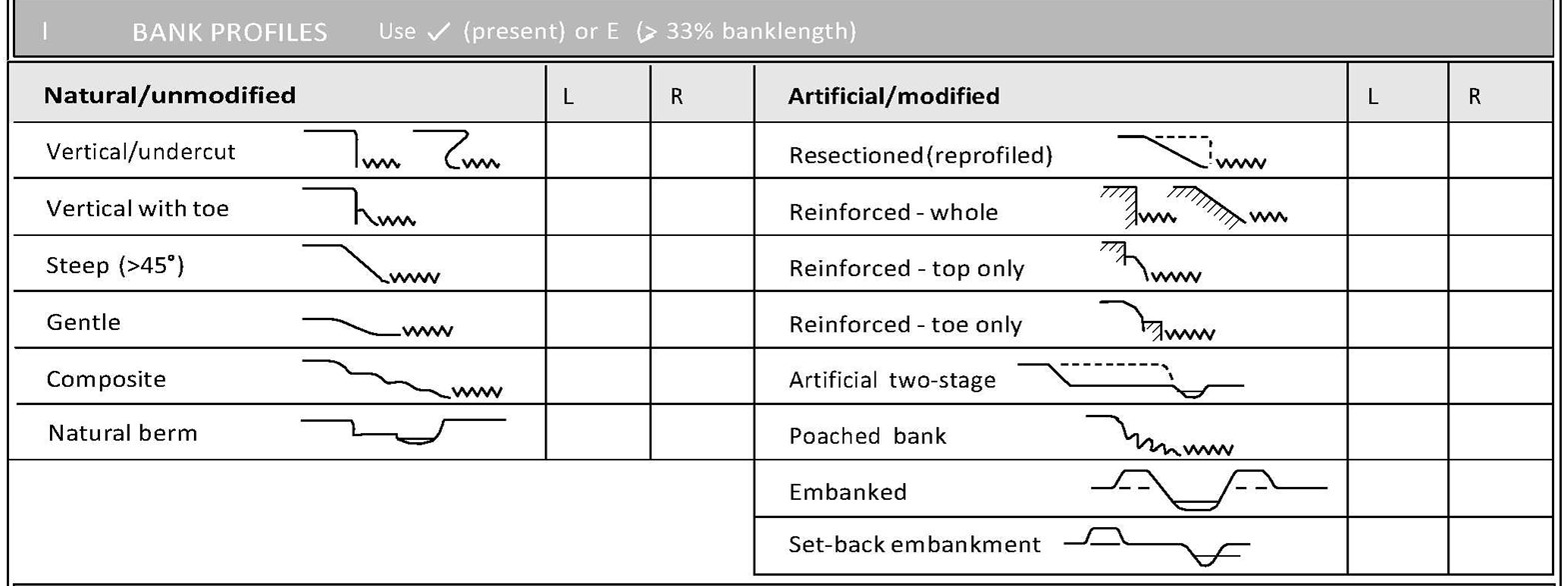
NATURAL/UNMODIFIED PROFILES
Record in the ‘left’ and ‘right’ bank columns the profiles (slopes) of unmodified banks. The first two categories cover vertical banks, including ‘cliffs’ recorded in Section E, and other vertical banks not forming cliff features such as banks on chalks streams that are vertical, but may be only a few centimetres high. Other steep banks should be recorded in the third category, and gently sloping banks in the fourth. All natural bank profiles are recorded here. In cases where there is uncertainty over bank profile, record them as best as possible in the natural/unmodified categories.
Vertical/undercut Predominantly vertical banks, which may include eroding and stable cliffs.
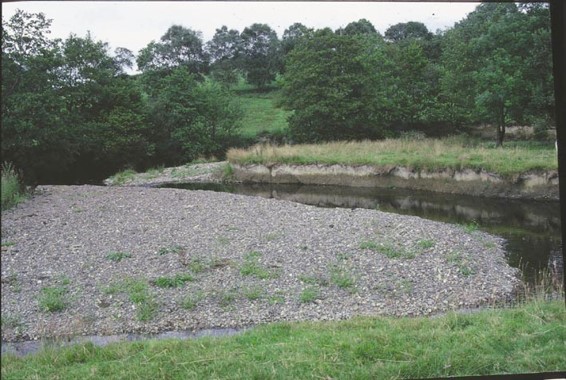
Vertical with toe Vertical bank with slumped material at base.
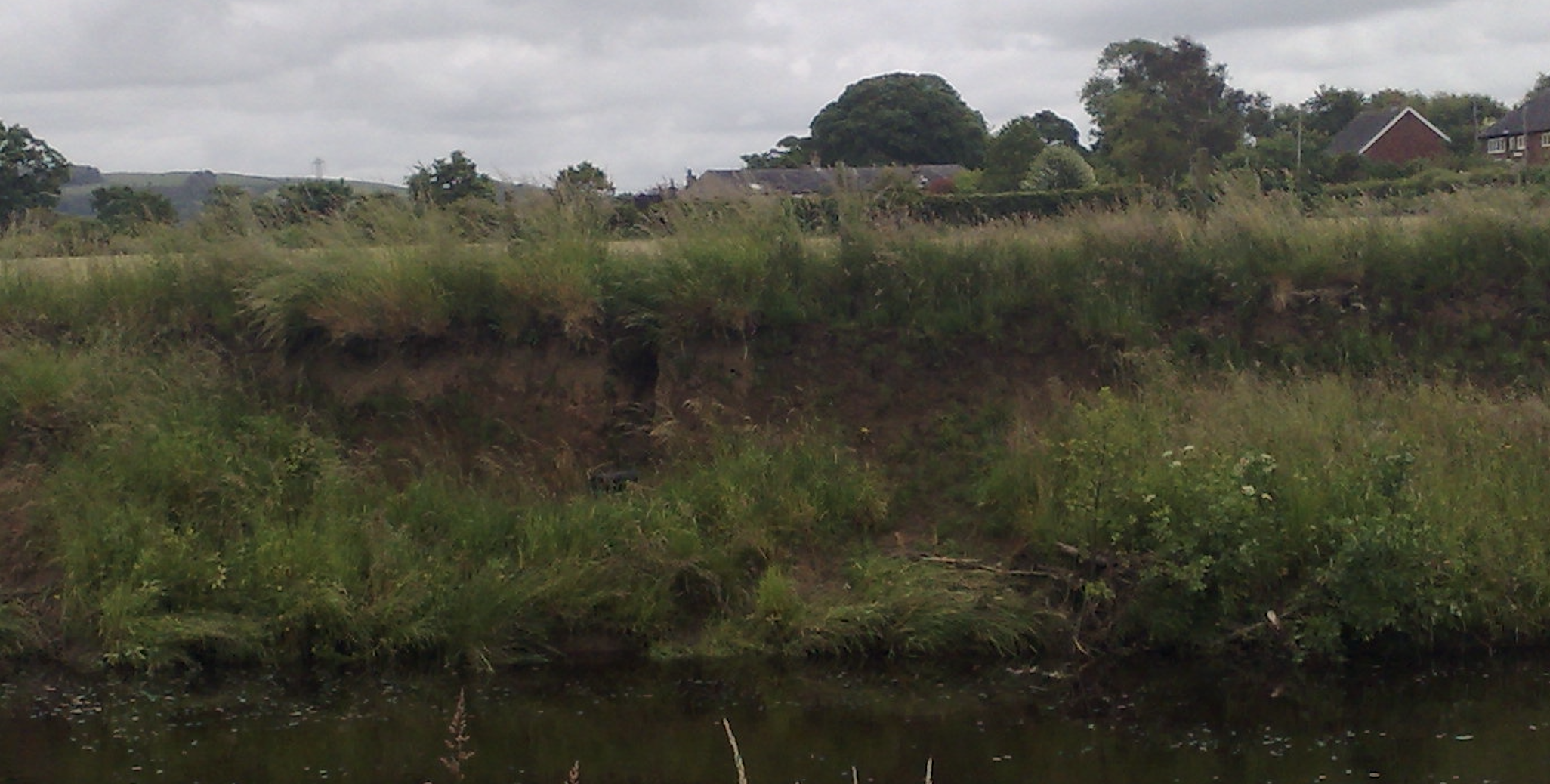
Steep Bank slope ≥45˚ angle, but not predominantly vertical.
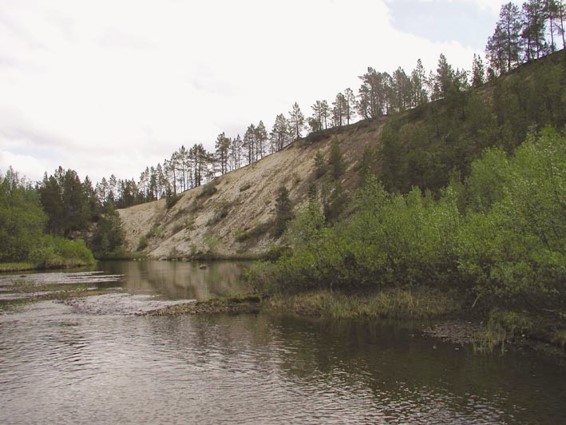
Gentle Bank slope <45˚(see right bank of image below)
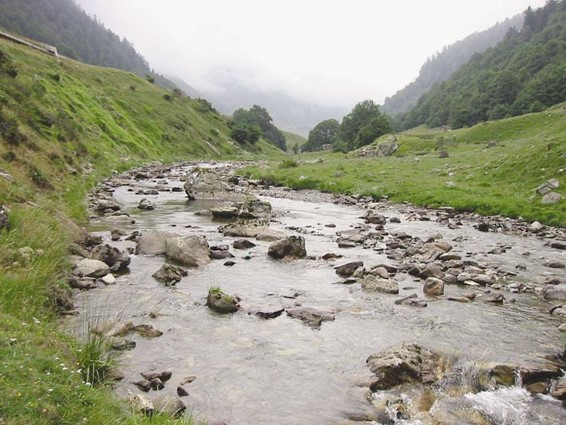
Composite Banks with complex profile which may be caused by previous slumping or sequences of channel erosion.
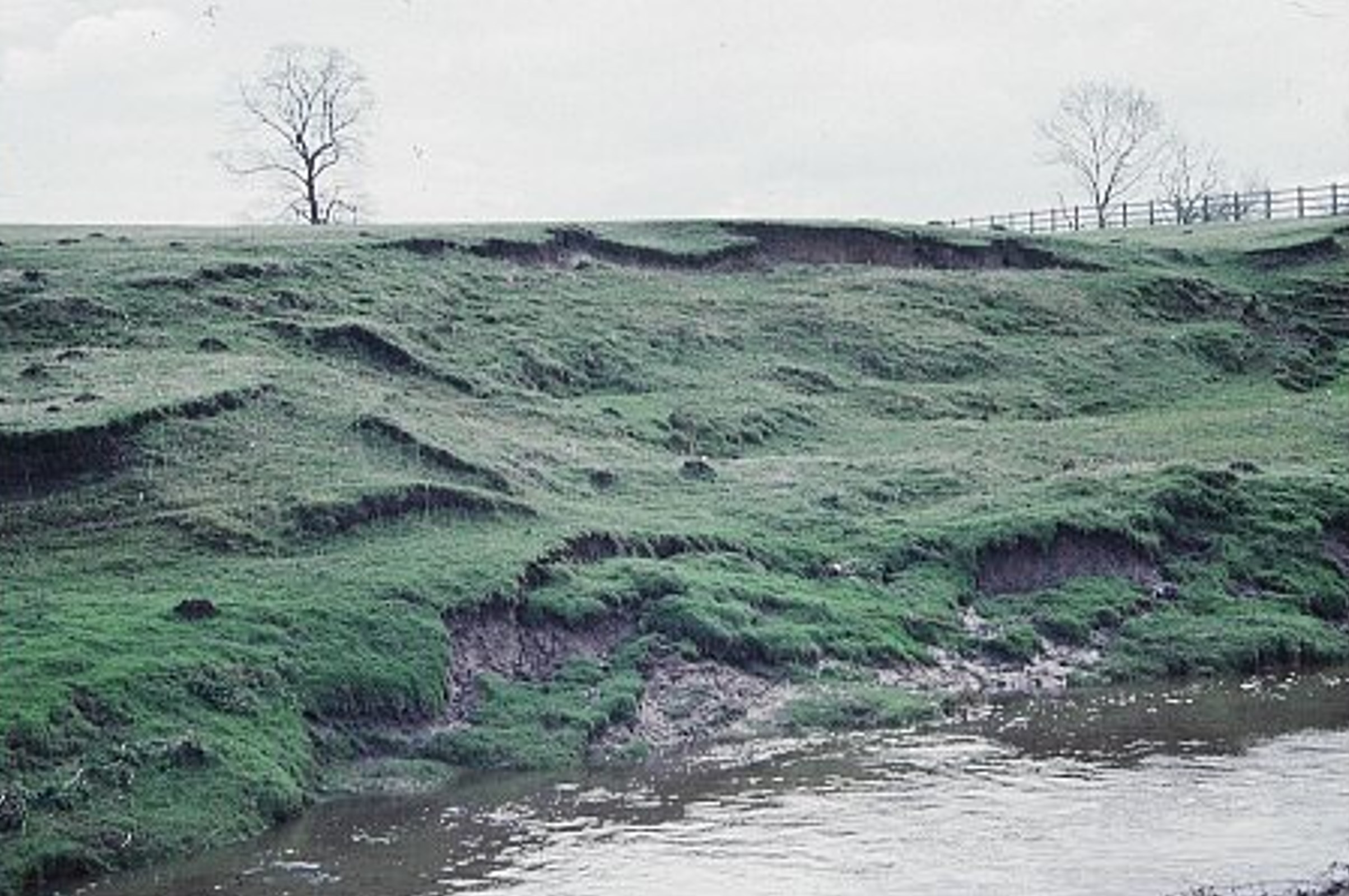
Natural berm See detailed definition in Section E. A transitional feature that requires a well?trained eye to confirm its presence. Beware: if artificial two-stage channels have been excavated just above the original river bed level, these may, over time, appear ‘like a new floodplain’; if so, do not record here.
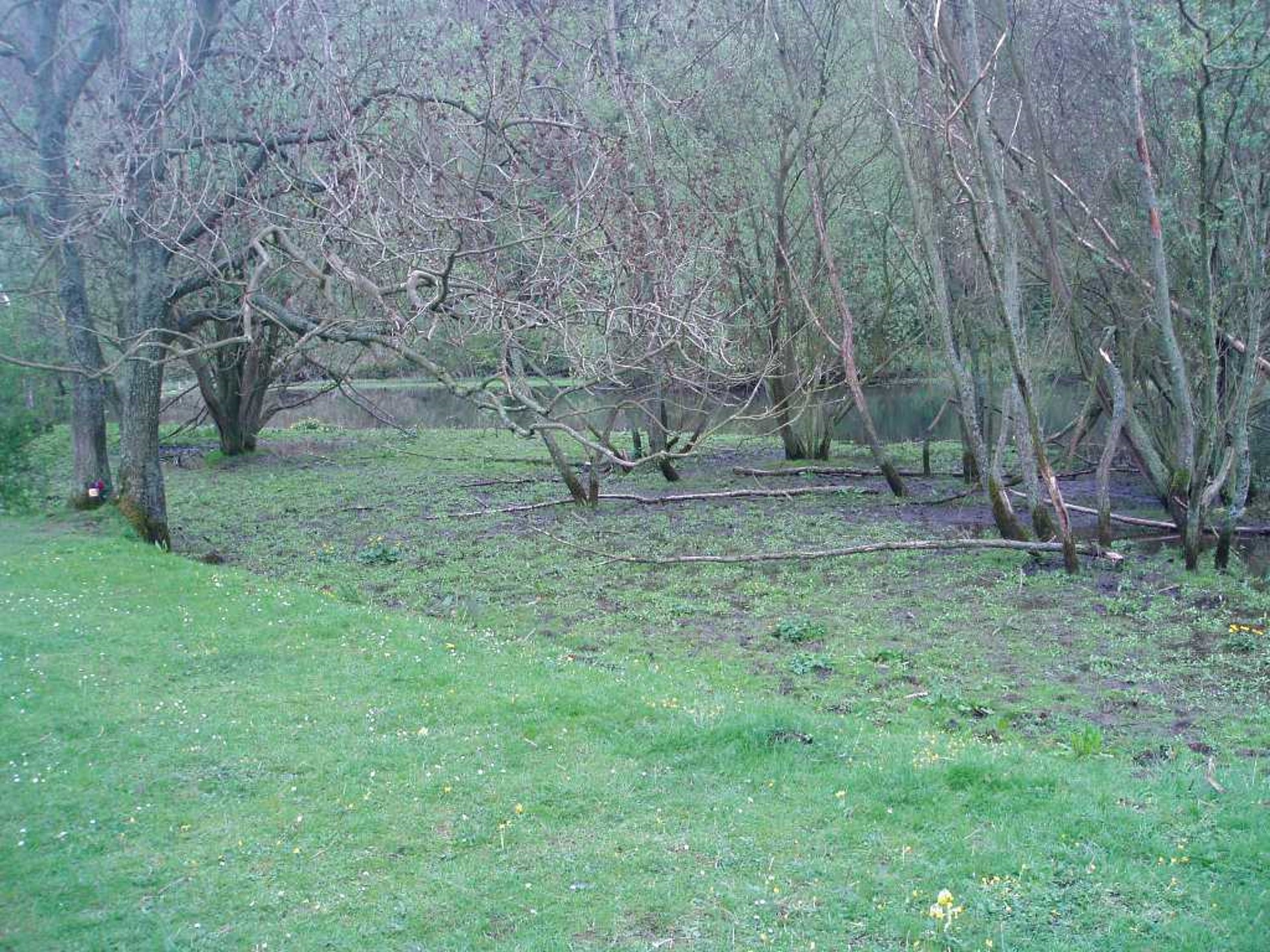
ARTIFICAL/MODIFIED PROFILES
The same modifications to banks noted in Section E are also included here, and as for ‘unmodified banks’, all the different resectioned and reinforced profiles on the left and right banks should be recorded in the appropriate columns. This is the only place where the occurrences of embankments set back from the bank are recorded. All modifications to banks are summarized here.
Resectioned (reprofiled)
Bank profile modified, often to accommodate flood flow, flood defence or other maintenance machinery. Recent re-profiling will produce a relatively smooth, uniformly angled, bank slope. See Section E; Bank Modifications. Only record in the sweep-up if not accompanied by whole bank reinforcement.
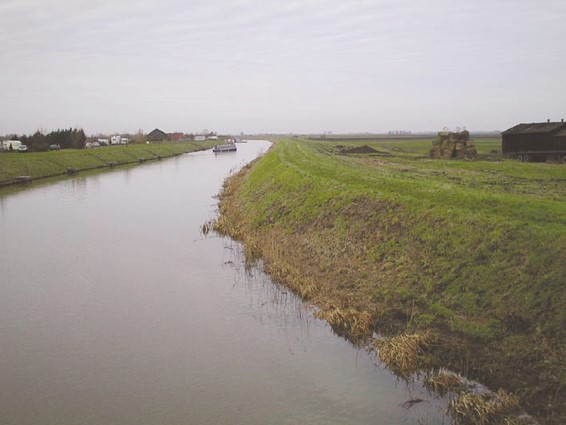
Reinforced bank
Whole or part of bank artificially strengthened for bank protection purposes. Examples include concrete, sheet piling, corrugated iron, wood piling, gabion, brick/laid stone, rip-rap and builders’ waste (see descriptions of above in E: Bank Materials). For sweep-up purposes, bank reinforcements are differentiated into three categories to indicate their vertical extent: (i) whole bank; (ii) top only; (iii) toe only. When the whole bank is reinforced, there is no need to record resectioning.

Artificial two-stage channel
Typically this is where one or both banks have been excavated laterally into the floodplain to create a shelf above dry weather flow. Also included are shelves constructed in previously widened channels to create narrower low-flow channels. Water spills over the second (normally dry) stage shelves during high flows. These are constructed features. Do not confuse with natural berms
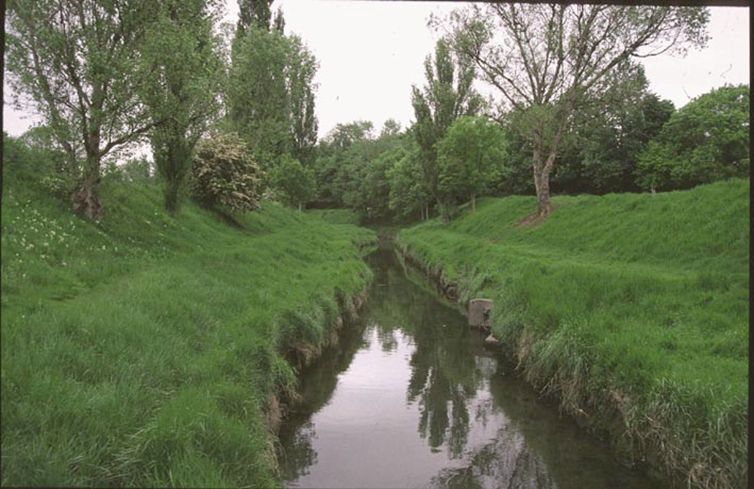
Poached bank
Bank significantly trampled or puddled by livestock. Include banks trampled as a result of human activity such as picnic spots, canoe access points, and fishing spots dug into the bank.

Embanked
Artificial embankment created to increase the banktop height. Only recorded here when it forms an integral part of the bank. Do not include embankments set back from the immediate banktop; these are recorded as set-back embankments.
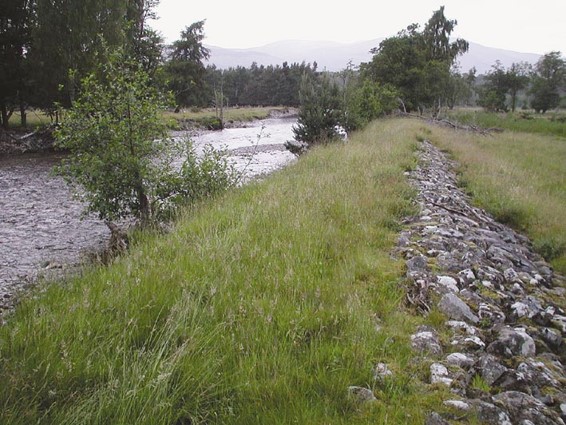
Set-back embankment
Artificial embankment or earth bund designed to increase flood capacity but set back from the river channel and forming a distinct floodplain landscape feature.
